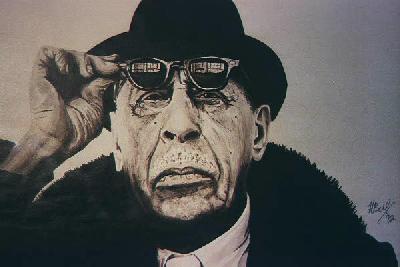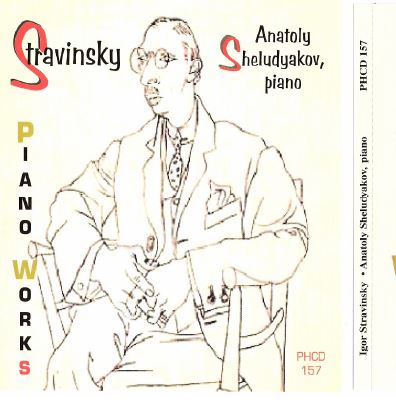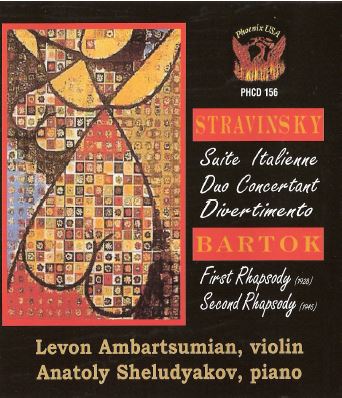
Stravinsky, Igor
Born in 1882 to a leading bass at the Mariinsky Theatre in St. Petersburg, he studied with Rimsky-Korsakov (1902-8), who was an influence on his early music, as were Tchaikovsky, Borodin, Glazunov and (from 1907-8) Debussy and Dukas. This colourful mixture of sources lies behind such pieces as Fireworks, The Faun and the Shepherdess, and the major ballet Firebird. It was not a simple matter of combining, however. A new musical element entered the mix–clean orchestral textures, “bright” instrumentation, and an emphasis on stamping, irregular rhythms–heard especially in the Firebird’s “Infernal Dance of the King Katschei.” Firebird’s success led to two more ballets for Diaghilev’s Ballets russes: Petrouchka and Le Sacre du Printemps, both landmarks of twentieth-century music. The Russian element becomes less Romantic and more “objectified.” By Le Sacre, the “infernal” element of Firebird had erupted into a previously-unheard, epic “barbarism,” so much so that some of the audience rioted at the Paris premiere. The score became an icon of musical modernism and influenced many other modern giants.
The end of World War I moved Stravinsky’s in a new direction with L’Histoire du Soldat, Tango, and Ragtime. In all these scores, he introduces a pared-down aesthetic and what at first seems like an element of parody but which turns out to be an element of “objectification,” like a Cubist collage with everyday objects. At the same time, he becomes interested in classical procedures and updates them for an expanded harmonic language. Masterpieces include the Octet, the “ballet with song” Pulcinella, and Oedipus Rex, which takes off from the Handelian oratorio.
Between the two wars, he was probably the most influential modern composer, especially in the United States and France. His masterpieces include the Concerto for two solo pianofortes, the piano and the violin concerti, the ballets Apollo and Jeu de Cartes, Concerto in D for strings, Danses Concertantes, Dumbarton Oaks Concerto, Symphony of Psalms, Symphony in Three Movements, Symphony in C, Ebony Concerto, Mass, climaxing in the full-length opera The Rake’s Progress (libretto by W. H. Auden and Chester Kallman), a twentieth-century classic.
After The Rake’s Progress, Stravinsky felt he had reached a creative impasse with the neoclassic style. He turned to serialism and became strongly influenced by the manner of Anton Webern, although he never lost his personal musical imprint. Major works include Movements for piano and orchestra, The Dove Descending Breaks the Air for chorus, Cantata, In Memoriam Dylan Thomas, Three Shakespeare Songs, Threni, Introit, and Requiem Canticles. Stravinsky died in 1971.

